High Pressure
”Can we inhabit an unwanted energy source of 20.898 m/s flow which covers 1/3rd the size of a dam, emitting a massive amount of mists and thunderous noise, with fundamental living features?”
High Pressure explores in three stages the idea of living the extremities of a jet stream.
The Site
In the axixs of Barcelona to Bilbao, the site is located at Eugi, Navarra. The Eugi Dam provides energy to 22.963 people living in a range of 34 Km generating 35 MW/year and a prodigious jet of water as a daily side effect.
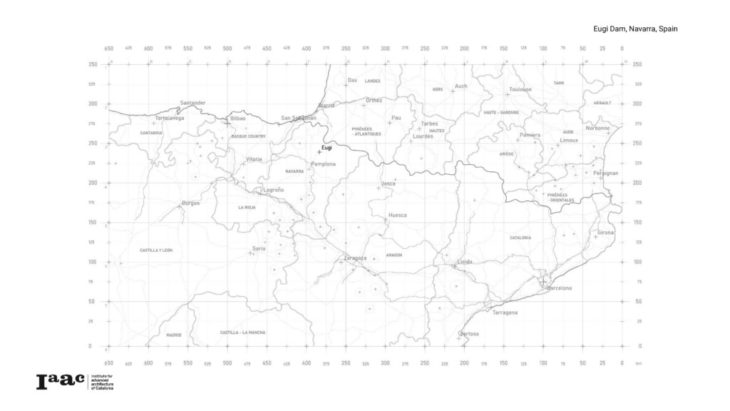
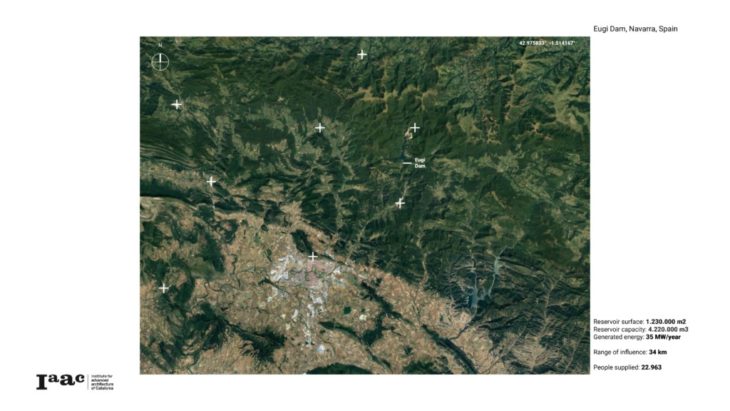
Comparing the size of jet and the dam, jet is just 1/3 the size of the dam yet providing an enormous amount of pressure and energy. To provide a basic idea, the dam is 51 m high and 252 m in length. The jet’s nozzle is at 17.8 m height from the ground. The jet is the byproduct of the dam.
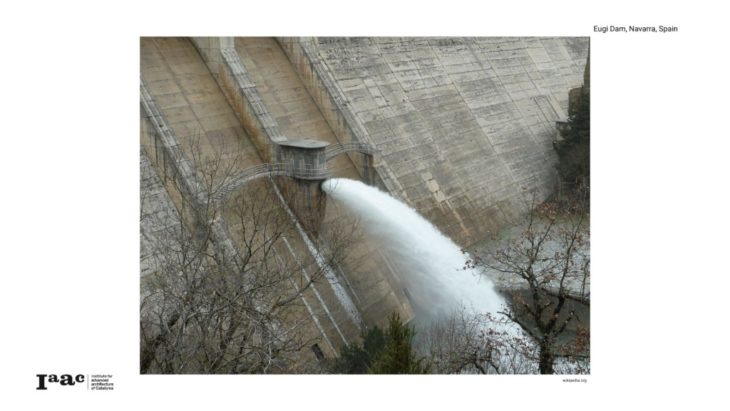
Crusher, a research device
A physical device has been developed to explore the phenomenon or the relationship between high pressure and waste production. The mechanism is similar to the dam itself were the water squeezes out of a small opening through pressure generated by the corkscrew’s twist through the canvas.
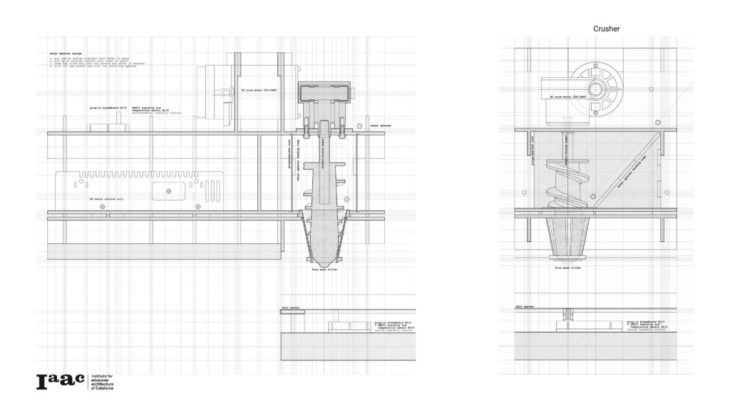
Water beans are spherified, as the machine switches on the beans flows into the crusher, it reaches the corkscrew, and splatters out in a parabolic action with response to the humidity and the pattern is recorded.
Anchored, the cabin
One of the most important considerations derived from the experiment is the idea that a jet of water is not a uniform mass, but a compound of water and gas mixed together in different proportions.
With this in mind the reconstruction of the jet anatomy considers the central core as completely made of water, and the external parts more gaseous and lighter. 10 thresholds have been defined and change according to the concentration of gas in the jet. The shutter opens once a day, from 8AM to 12PM.
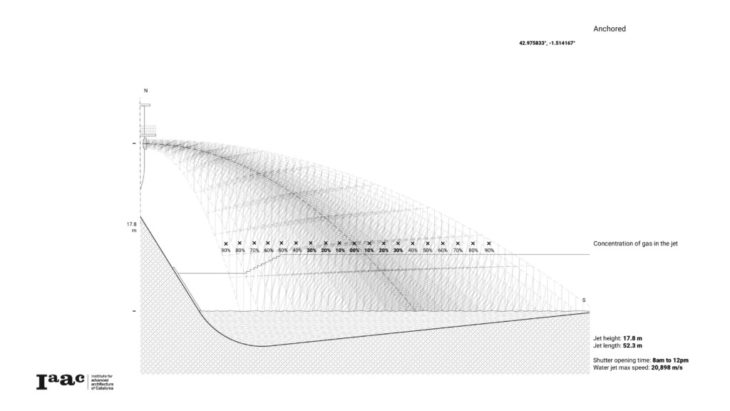
How to interact with this phenomenon? Glass is an engaging material because it visually connects spaces while ensuring high physical insulation. But can a glass panel resist the violent pressure? Since the pressure can be affected by the planar rotation of the glass, it is possible to approach the jet controlling the panel orientation in a range in which the safety threshold is always ensured.
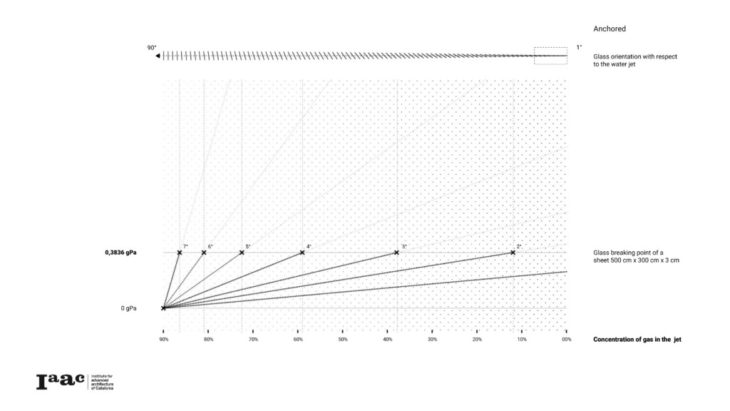
So, the jet stream as a compound of water and gas, and the orientation of the glass panel are the elements that make possible approaching the jet and get as close as possible to the energy source, as is evident in the site plan.
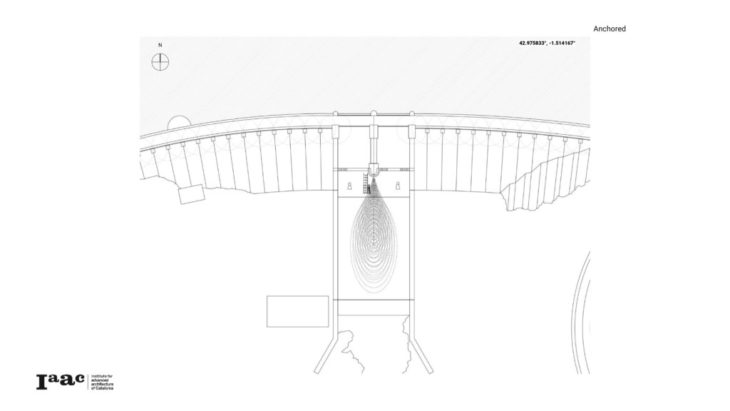
The structural solution is that of a skeleton anchored to the inclined wall of the dam and supported by cables under tension. The Jet flows and comes out from the shutter, once a day, the glass intercepts and deviates the jet and the cabin is being developed from the glass.
The glass provides a living blob in the extremities where human activities are allied by the jet cycle. Behind the glass, opacity, vibrations and humidity exist in a bound of extremities where stairways not only connect the physical levels but also the gradation of phenomenal extremities. The glass cuboid is the space of dormancy, the cantilevered deck is where the focused activities are driven by the phenomenal factors in extremities, and the overhead deck is the place where the maximum energy is encountered.
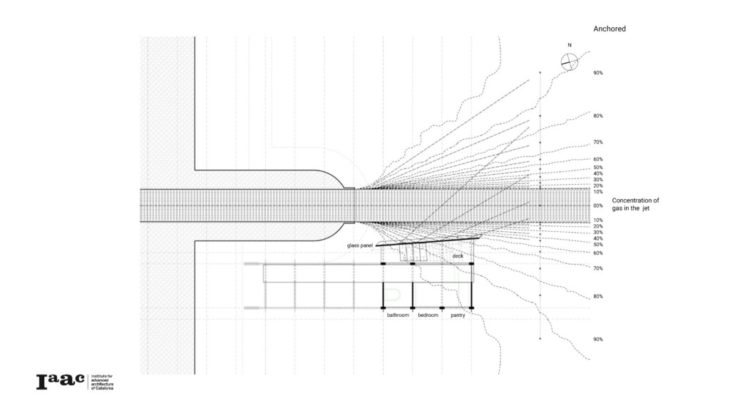
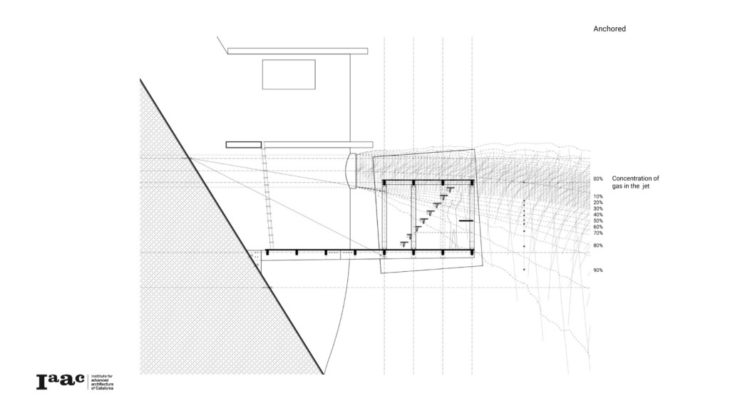
Can we inhabit all degrees of extremities?
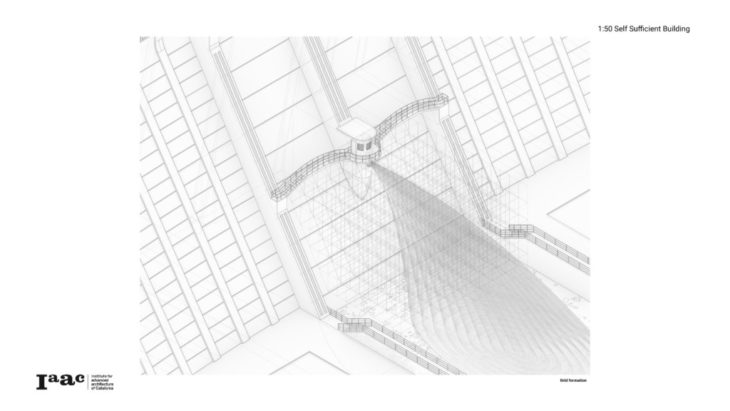
The jet covers 1/3 the size of the dam, and to handle the scale, a grid frame of 2.4 m by 1.6 m of height 2.7 m is developed, which is being the spine of living spaces.
- Degree 1: are spaces which responds between 40 to 50 % of gas in immediate proximity of the jet.
- Degree 2: are spaces which responds between 60 to 70 % of gas in jet.
- Degree 3: are spaces which responds between 80 to 90 % of gas in farthest proximity of the jet.
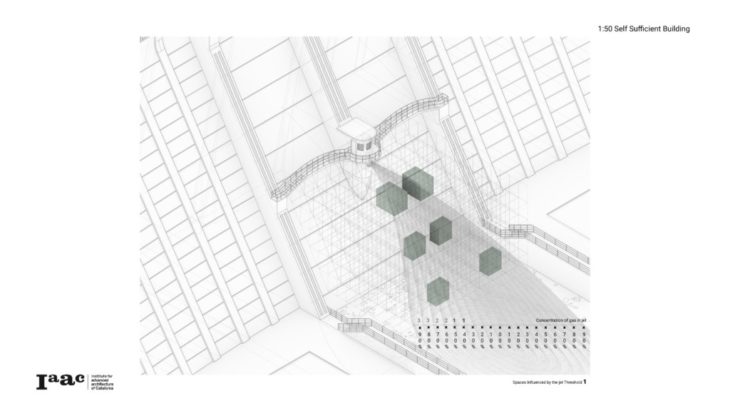
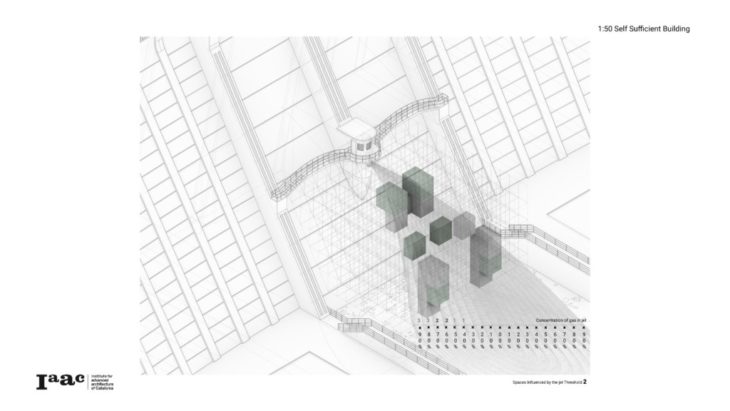
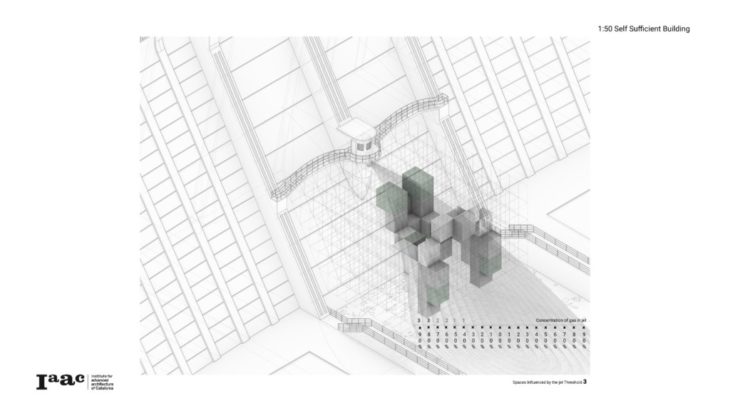
The spaces are horizontally circulated through a series of decks which also acts as an outdoor recreational space. The porosity of decks is maximized with material transition which is, the nets where the high density of water comes in contact with the deck. The stairways are placed in a way to minimize the distances within the circulation of levels.

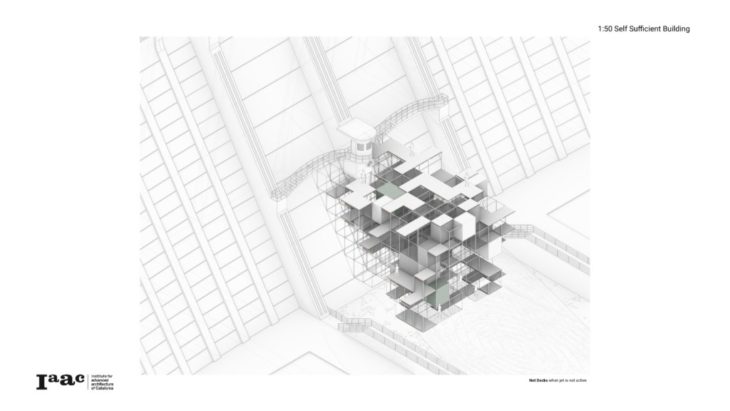
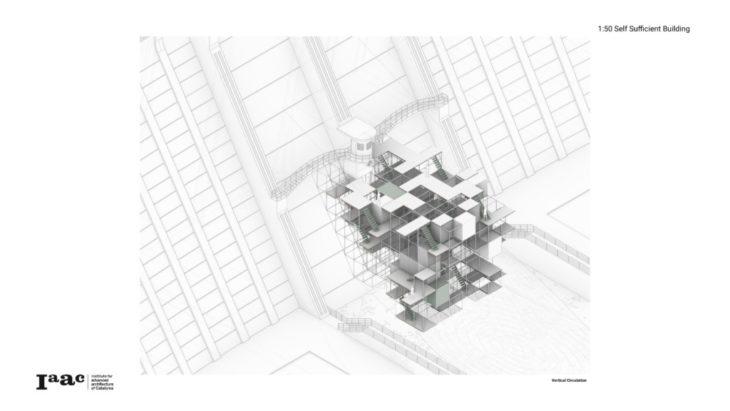
The spaces are organised with response to the parabola of jet thus structurally keeping it away from the jet yet going as close as possible to the parabola on various degrees of extremity.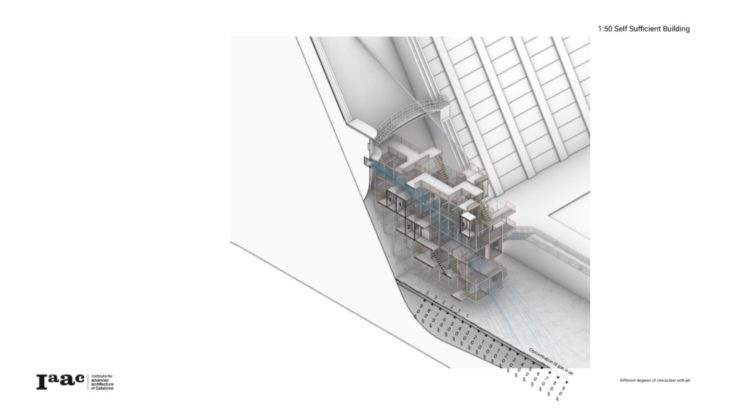
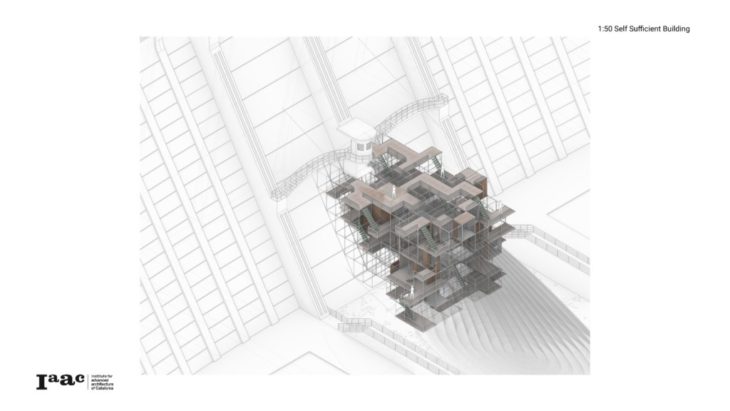
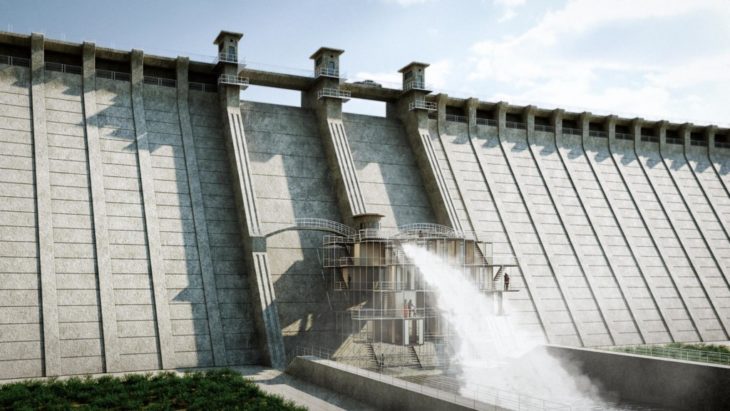
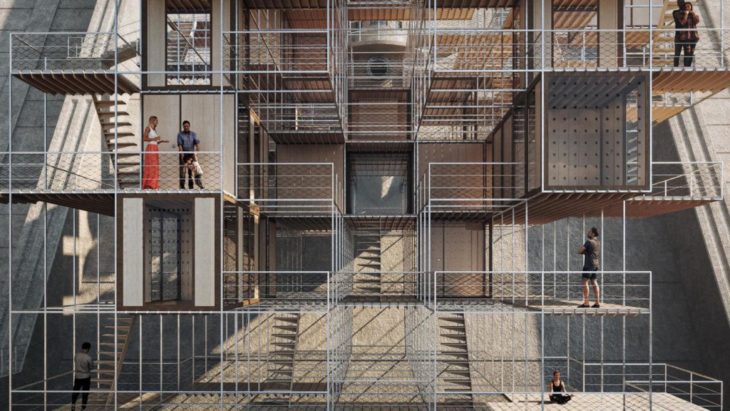
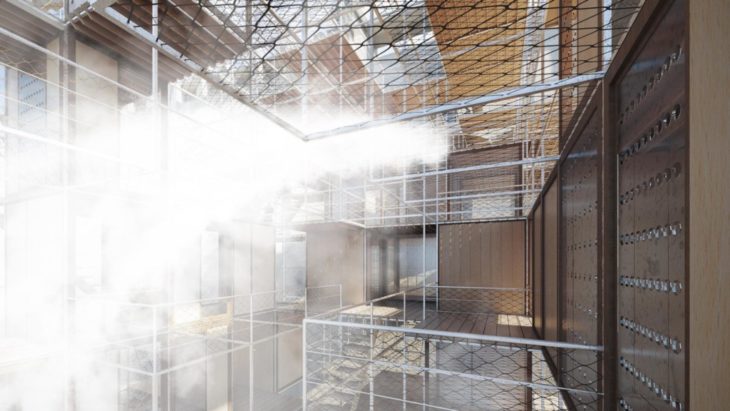
High Pressure is a project of IAAC, the Institute for Advanced Architecture of Catalonia, developed during the Master in Advanced Architecture (MAA01) 2021/22 by students: Angelo Desole, Vaibhav Toshniwal & Kingsley James Claudin – faculty: Edouard Cabay, Raimund Krenmueller – student assistant: Elena Petruzzi